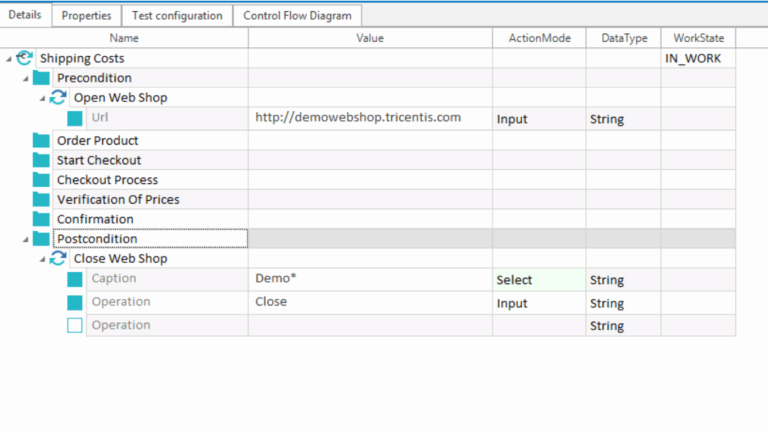Introduction
In today’s fast-paced software development lifecycle, Quality Assurance (QA) professionals are expected to do much more than just find bugs. They play a critical role in understanding system architecture, data flow, and object behavior. One of the most valuable tools for visualizing and comprehending software systems is the UML Class Diagram. Whether you’re a beginner just starting with QA courses online or an experienced tester pursuing QA software testing courses, mastering UML class diagrams is essential to enhancing your analytical and documentation skills.
In this blog, we will explore what UML class diagrams are, how they are used in software engineering and QA, and why they are a vital part of every Quality assurance testing course. Let’s also discover how QA online training equips professionals with the skills to interpret and even create UML diagrams.
What is a UML Class Diagram?
A UML Class Diagram is one of the 14 types of Unified Modeling Language (UML) diagrams used to represent the static structure of a system. It describes classes, their attributes, methods, and the relationships among them.
Essentially, a UML class diagram is like a blueprint of a system. For QA professionals, it provides a powerful way to understand the design and functionality of the software under test.
Key Components of UML Class Diagrams:
- Class: Represents a blueprint of an object. Contains:
- Attributes (data members)
- Operations (methods or functions)
- Relationships:
- Association
- Aggregation
- Composition
- Inheritance
- Dependency
Understanding these elements is a core part of most QA online training programs because it enables testers to align their test cases with system design.
Why UML Class Diagrams Matter in QA
So why should someone enrolled in QA software testing courses care about class diagrams?
Because these diagrams:
- Reveal System Structure: QA testers get insights into how components interact.
- Enhance Communication: Improve collaboration with developers and business analysts.
- Aid in Test Planning: Helps identify test cases by understanding relationships and data flow.
- Support Static Testing: They assist in reviewing system design before any code is written.
By including UML class diagrams in your testing toolkit, you become a more analytical and technically proficient QA professional a major goal of most quality assurance testing courses.
Deep Dive into UML Class Diagram Elements
Let’s break down each element in more detail.
1. Classes
Classes are represented by rectangles divided into three parts:
- The top contains the class name.
- The middle lists attributes.
- The bottom lists operations.
Example:
---------------------
| Employee |
---------------------
| - name: String |
| - id: int |
---------------------
| + getDetails() |
| + setID() |
---------------------
Questions
- What is uml? Explain briefly
- Draw UML diagram for school based concept
2. Attributes
Attributes are the variables or data held by the object. These are crucial in test design for identifying what data should be verified.
3. Operations/Methods
These are the actions the object can perform. In QA courses online, students learn how to write test cases for these operations.
4. Relationships
Here are the primary relationships you need to understand:
- Association: A general link between two classes.
- Aggregation: A “has-a” relationship. One class contains another.
- Composition: A stronger form of aggregation.
- Inheritance: One class inherits attributes and operations from another.
- Dependency: One class uses another temporarily.
Grasping these relationships helps QA professionals understand potential system interactions, a key outcome of QA online training.
How UML Class Diagrams Are Used in QA Testing
Here’s how UML class diagrams support various QA activities:
1. Test Case Design
Class diagrams help testers identify:
- Boundaries of each class
- Input/output operations
- Dependent classes
2. Impact Analysis
When a class changes, its ripple effect on related classes is visible in the diagram. This helps prioritize regression testing.
3. Defect Reporting
Reporting bugs becomes easier when a tester can pinpoint the exact class or method that’s misbehaving.
Example: UML Class Diagram in an E-Commerce App
Let’s say you’re testing an e-commerce platform. The diagram might include classes like:
- User
- ShoppingCart
- Product
- Order
Simplified Class Diagram:
User
+ userID
+ name
+ email
+ login()
Product
+ productID
+ name
+ price
+ getDetails()
Order
+ orderID
+ date
+ calculateTotal()
ShoppingCart
+ cartID
+ addItem()
+ removeItem()Relationships:
- User “has-a” ShoppingCart
- ShoppingCart “contains” Products
- Order “depends on” User and Product
This visualization enables QA testers to better understand how a customer’s action might interact with multiple backend classes.
UML Class Diagrams in QA Training
Top QA software testing courses incorporate UML diagrams as part of their curriculum. These diagrams are taught for their real-world relevance and role in advanced test strategy design.
Some concepts covered in such courses include:
- Reading and interpreting diagrams
- Creating diagrams using tools (like Lucidchart or Visual Paradigm)
- Mapping test cases to class components
- Validating class relationships
By the time students finish their QA online training, they are expected to analyze such diagrams and derive test scenarios accordingly.
Benefits of Learning UML Class Diagrams for QA
Let’s highlight the specific advantages QA professionals gain:
1. Better Communication with Developers
By speaking the same “diagram language,” QA can effectively raise issues and collaborate on improvements.
2. Faster Understanding of Complex Systems
A class diagram offers a snapshot of how a system is structured, reducing time needed to understand the product architecture.
3. Enhanced Test Coverage
You can map test cases to each class and method, ensuring comprehensive test coverage.
4. Effective Requirement Traceability
Class diagrams help align functional specs with testing needs especially useful for traceability matrices.
If you’re enrolled in quality assurance testing courses, expect UML to show up early and often in your syllabus.
Tools to Create and Analyze UML Class Diagrams
In both industry and QA courses online, several tools are popular for creating and interpreting UML diagrams:
- Lucidchart (Web-based)
- StarUML
- Draw.io (diagrams.net)
- Enterprise Architect
- Visual Paradigm
These tools are often included in QA software testing courses, especially for hands-on diagramming exercises.
Real-World Case Study
Case Study: Banking Application Testing
A QA team at a fintech firm used UML class diagrams to test their loan approval system. The system had classes like:
- Loan
- Applicant
- CreditScore
- ApprovalEngine
By analyzing the class diagram, the QA team found:
- Unused attributes in the CreditScore class
- Circular dependencies between Loan and ApprovalEngine
- Missing validation logic in methods
This proactive analysis led to early design changes long before the first line of code was written.
This example shows why modern QA online training focuses on teaching such preventive quality techniques using UML.
Common Mistakes QA Professionals Make with UML
- Ignoring Class Relationships: Many testers focus only on class attributes, missing the importance of how classes interact.
- Not Updating Diagrams: As the code evolves, diagrams should be updated, especially for regression testing.
- Not Using Tools: Manual diagramming is slow and error-prone. Learning tools is a must, which is why it’s part of top QA courses online.
How to Master UML Class Diagrams in QA Courses
The best way to learn is to:
- Enroll in structured quality assurance testing courses
- Practice with real-world systems (e.g., simulate apps like shopping carts or banking portals)
- Review existing diagrams in open-source projects
- Use UML tools to create your own test mappings
Many QA online training programs offer downloadable class diagrams and ask learners to derive test cases as exercises a proven way to develop critical thinking.
Conclusion
Understanding UML class diagrams is not just for developers it’s a must-have skill for QA professionals in today’s software landscape. Whether you’re currently enrolled in QA courses online or just beginning your exploration of QA software testing courses, investing time in learning UML will pay dividends in better test planning, improved communication, and higher software quality.
Class diagrams bridge the gap between design and testing. They give QA teams a clearer view of system logic, helping them build smarter, more effective test cases.
If you’re looking to advance your career, explore QA online training that integrates visual modeling and hands-on UML practices. It could be your key to mastering both the art and science of quality assurance.
Ready to dive into UML class diagrams and sharpen your QA skills? Start your journey with an advanced quality assurance testing course that emphasizes visual modeling, real-world scenarios, and job-ready practices.






























5 Responses
UML
UML class diagrams methodology is been used extensively and especially in software design. It has many types of diagrams for the different software design purposes, we can present the basic diagram of UML in the SQL and compare them with the ER diagram.
It includes:
Top section will give class name
Middle section will include attributes for the individual objects of the class
Last section will include operations which will be applied to objects
n UML there will be two types of relationship: one is an association and the other is aggregation. Aggregation which will represent the relationship between the whole object and its component part has distinct diagrammatic notations. Aggregation, as well as an association, will not have different structural properties and the choice of which type of relationship to make use of will be subjective. UML will distinguish between unidirectional and bidirectional associations where the unidirectional line will be connecting the classes, will be displayed with an arrow which will indicate that only one direction for accessing the classes.
UML class diagrams methodology is been used extensively and especially in software design. It has many types of diagrams for the different software design purposes, we can present the basic diagram of UML in the SQL and compare them with the ER diagram.
UML class diagrams has many types of diagrams for the different software design purposes, we can present the basic diagram of UML in the SQL and compare them with the ER diagram. In the UML diagram class, which is similar to the entity type and which is displayed as a box which will include like: Top section will give class name, Middle section will include attributes for the individual objects of the class and Last section will include operations which will be applied to objects. Top section will be class 10. Middle section is 10 male and 10 female. The last section is details of the classroom.
UML
UML class diagrams methodology is been used extensively and especially in software design. It has many types of diagrams for the different software design purposes, we can present the basic diagram of UML in the SQL and compare them with the ER diagram.
It includes:
Top section will give class name
Middle section will include attributes for the individual objects of the class
Last section will include operations which will be applied to objects
n UML there will be two types of relationship: one is an association and the other is aggregation. Aggregation which will represent the relationship between the whole object and its component part has distinct diagrammatic notations. Aggregation, as well as an association, will not have different structural properties and the choice of which type of relationship to make use of will be subjective. UML will distinguish between unidirectional and bidirectional associations where the unidirectional line will be connecting the classes, will be displayed with an arrow which will indicate that only one direction for accessing the classes.
UML Class diagrams methodology has been used extensively and especially in soft design. It has many types of diagrams for the different software design purposes, we can present the basic diagram of UML in the SQL and compare them with the ER diagram. The top section will give class name, middle section will include the attributes for the individual objects of the class and the last section will include the operation which will be applied to objects.